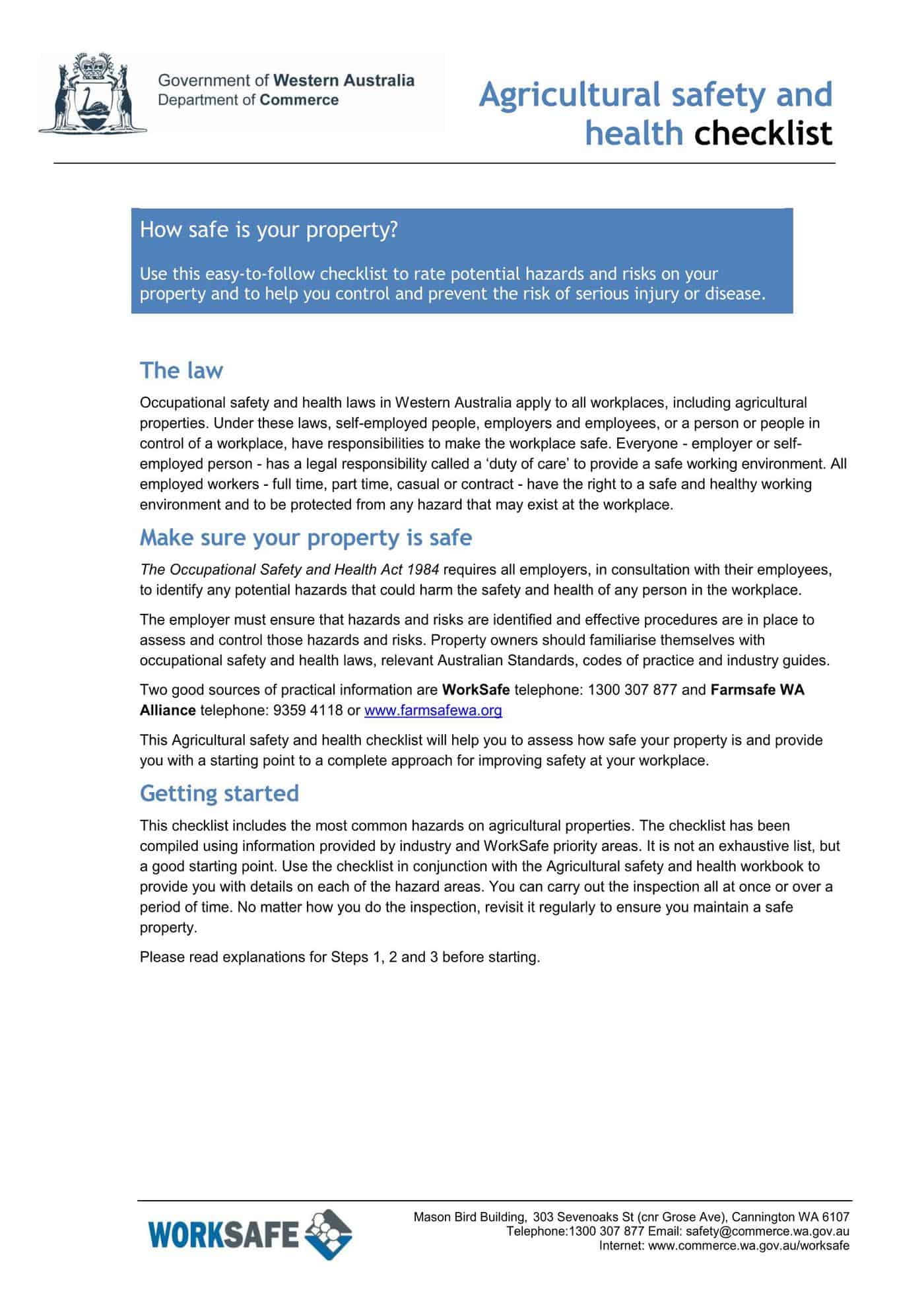Part of good corporate governance is transparency. A core element of occupational health and safety (OHS) is effective consultation. These two business practices seem compatible in that they address what is good for business and what is good for the workers. But there is a snake in this garden of safety – Legal Professional Privilege (LPP).
Category: guidance
Inconsistent quad bike safety advice in WA
 On 18 January 2017, WorkSafeWA released an agricultural safety checklist which includes some hazards associated with quad bike operations. West Australia’s occupational health and safety (OHS) regulator stresses the checklist only lists common hazards and refers to a handbook. The only agricultural handbook available on its website is from 2014 and the quad bike safety information seems outdated or, at least, inconsistent with the advice from South Australia and elsewhere. Continue reading “Inconsistent quad bike safety advice in WA”
On 18 January 2017, WorkSafeWA released an agricultural safety checklist which includes some hazards associated with quad bike operations. West Australia’s occupational health and safety (OHS) regulator stresses the checklist only lists common hazards and refers to a handbook. The only agricultural handbook available on its website is from 2014 and the quad bike safety information seems outdated or, at least, inconsistent with the advice from South Australia and elsewhere. Continue reading “Inconsistent quad bike safety advice in WA”
Latest quad bike safety advice is more measured
 SafeWorkSA has released a series of single page safety advices on a range of occupational health and safety (OHS) topics including the use of quad bikes in agricultural workplaces. The information included and the tone used indicates that the debate over quad bike safety may be settling.
SafeWorkSA has released a series of single page safety advices on a range of occupational health and safety (OHS) topics including the use of quad bikes in agricultural workplaces. The information included and the tone used indicates that the debate over quad bike safety may be settling.
The advice is clear and concise with some new safety perspectives but there are a couple of odd elements. The advice does say that the suitability of a quad bike should be assessed prior to purchasing but doesn’t suggest alternatives. These options should be expanded elsewhere on SafeWorkSA’s website or farming publications. Continue reading “Latest quad bike safety advice is more measured”
Drugs and Alcohol at Work – Part 2
Part 2 of the Cabbage Salad and Safety podcast’s discussion on managing drugs and alcohol at work is now available.

Young worker research misses the mark
On October 7 2016, Victoria’s trade union movement held a Young Worker Conference. The major public statement from that conference was the launch of a survey report called Young Workers Health and Safety Snapshot. The report has received some mainstream press which is not unusual for this type of trade union member survey. Almost twenty…
SWMS on hairdressing is not enough
Part of the reason that workplace safety seems complicated to many business owners is that, sometimes, occupational health and safety (OHS) consultants over-complicate safety. Safe Work Method Statements (SWMS) are safety documents designed for high risk work activities that this blog has written about previously. Recently SWMS have begun to be sold through a major office stationery…
Breakfast seminar provides OHS tidbits
In May 2016, the Safety Institute of Australia (SIA) and Herbert Smith Freehills (HSF) held their annual safety breakfast. The speakers were the usual blend of WorkSafe representative, SIA, Herbert Smith Freehills and remuneration survey results but there is always bits of useful information for the old hands and a lot of information for new entrants in the occupational health and safety profession. Continue reading “Breakfast seminar provides OHS tidbits”

